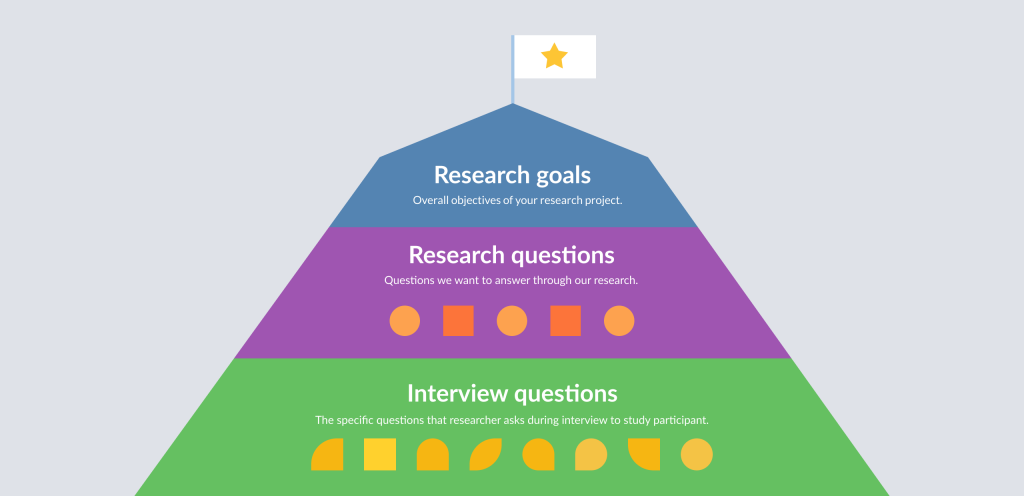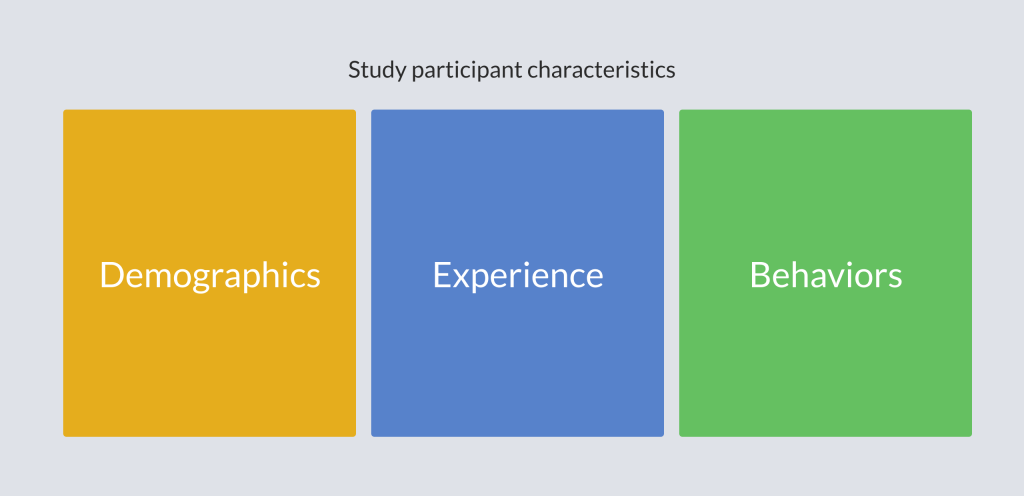
A screener survey, also known as a screener questionnaire, is a short survey given to potential participants in a UX research study.
It helps to determine whether or not the participants meet the criteria for the study, such as their demographics, experience, or behaviors.
Screener surveys help UX researchers to recruit the right participants for their studies. It ensures that the researchers get feedback from the people who are most likely to use the product or service they are designing and, therefore, can provide the most valuable insights.
It is worth mentioning here that screener surveys are not always needed, but they can be helpful in some situations. For example:
Before you start creating a screener survey for your user research study, there are a few things you should keep in mind:
Before creating a screener survey, it is vital to plan your user research study first. It means that you should define your research goal, research questions, and target audience in the first place.
Your research goal is the overall objective of your study. What do you hope to learn from the study?
Your research questions are more specific and focused. They should be specific enough to be answered by your study but broad enough to provide valuable insights.
For example, let’s assume you are in a design team tasked with redesigning an e-commerce website for a clothing company. In this scenario, this is how your research plan could look like:
Research goal: To understand the needs and pain points of users of a company’s website.
Research questions:
We write more about planning user research in the article here.

Once you have planned your study and defined your research goal and research questions, you can start to define your ideal study candidate. Who would be the most helpful in providing you with the information you need to answer your research questions?

To define your ideal study candidate, consider the following factors:
Once you have defined your ideal study candidate, you can start to create questions for your screener survey that will help you to identify participants who meet that criteria.
We will discuss specific screener survey questions later in the article.
It is an important step. To gather valuable insights, you need to talk to people who will be able to provide them. This is why researchers need screener surveys in the first place, and the success of screener surveys depends on well-defined study candidates.
As mentioned in the previous paragraph, it is crucial to have well-defined characteristics of a potential study participant. However, when writing screener survey questions, you should screen for behaviors rather than demographics. In other words, you should ask questions about what participants do rather than who they are.
In a nutshell, instead of relying on demographics to predict how people will use a digital product, it is more effective to ask people questions about their behaviors and interests.
Questions in a screener survey should be arranged in a logical order, which should help to make the survey flow smoothly and reduce the chance of participants abandoning it.
To come up with the right order for your survey, try applying these rules:
P.S.: Branching logic is a method to create a custom path based on a user’s response. For example, suppose for a question, “How often do you use social media?” the participant answers: “Never”. In that case, branching logic will allow the participant to skip the question related to the content he is consuming on social media.
When writing screener survey questions, try to be as precise as possible. Avoid vague, general questions that participants could interpret in different ways. Ask specific questions that will give you the information you need to decide whether or not to include the participant in your study.
For example, instead of asking: “How often do you use social media?” you could ask: “How many hours per day do you spend on social media?”
Participants could understand that, in the first question, the researcher is asking about the general usage of social media. As a result, participants could provide an answer “every day.” The second question narrows down possible answers to a specific number of hours a day, which, in some cases, could be a more desirable outcome.
To ensure that your questions do not exclude anyone, provide an “other” option for participants who do not fit into one of the answer choices you have provided.
For example, if you have to ask a question about the gender of the participant, you should provide the following answer choices:
This question provides an “other” option for participants who identify as non-binary or have another gender identity.
Providing an “other” option for all of your screener survey questions is a good practice to follow. It will help you to recruit a more diverse group of participants for your study, collect more accurate and reliable data, and make participants feel more comfortable answering your questions.
In general, surveys include mostly close-ended questions because they gather information from a large sample of respondents, and yes-no questions make data easier to analyze.
However, it is a good idea to include some open-ended questions in your screener survey. They allow participants to provide more detailed information about themselves and their experiences.
By including open-ended questions in your screener survey, you can collect more valuable and in-depth data from participants. This information can be helpful in your study, understanding your participants, and interpreting your results.
It is essential to keep the screener survey short and to the point. Participants are more likely to complete a survey that is short and easy to finish.
Aim to keep your screener survey to 10 questions or less. If you must ask more than ten questions, consider breaking up your survey into multiple parts. This will make the survey more manageable for participants and less likely to overwhelm them.
Of course, every screener survey is different, as it serves to find perfect participants for each unique study. However, some questions will be standard and fit for screener surveys of many user research studies.
Here are some examples of screener survey questions that can be used to target participants based on their demographics, such as age, gender, location, income level, and education level:
Age:
Gender:
Location:
Income level:
Education level:
It is important to note that you should ask demographic questions only when they are relevant to the research study.
For example, if you are conducting a study on the usability of a new website, it would be appropriate to screen for participants based on their age and location. However, it would not be appropriate to screen for participants based on their gender or income level unless these factors are relevant to the website’s design or functionality.
Here are some examples of screener survey questions to target participants based on their behaviors, such as product usage, online shopping habits, and social media activity:
Here are some more specific examples:
Online shopping habits:
Social media activity:
Behavioral screening questions are often more effective than demographic screening questions because they allow researchers to target participants more likely to be interested in the research study.
Here is a summary of all the key points of this article.
We at Talebook hope this article will help you write practical screener survey questions that will help you recruit the right participants for their studies.
How to use Screening Questions to Select the Right Participants for User Research by Kathryn Whitenton
Writing Your First User Research Screener Survey by Robert R. Urbaniak